Prefabricated self-supporting panels, structural insulated panels, panelized building system or structural insulated sandwich panels are all formulations to define the same type of building material - SIP panels.
When I wrote about the different types of wooden houses a reader brought to my attention that there is another type of house I haven't mentioned. This is prefabricated panel construction, i.e. SIP panels, which is different from prefabricated structures which we mentioned in our articles. The prefabricated structures are made in a "house factory", which reduces the working time on site. Walls are made on a project-by-project basis, varying from house to house. SIP panels are a factory-built building material like other wood-based panels and used by construction companies to erect houses.
SIP are structural insulated panels
SIP stands for the English name of the material - Structural Insulated Panels - and stands for structural insulated panels. These are sandwich panels that have an insulating material between two structural panels.
The tiles are mostly made of OSB construction, but can also be made of metal, plywood, fiberglass, cement or magnesium oxide. Insulation is the core of the panel and can be expanded polystyrene, extruded polystyrene or rigid polyurethane foam. Other core options are available but are less commonly used.
Panels can be used to build interior and exterior walls, floors and foundation elements or roofs. They are built to suit any type of building project. The walls are also made to be assembled using similar panels that also contain insulation. This makes the building energy efficient and eliminates the possibility of energy bridging.
Systems have also been developed that allow panels to be produced on site. This further reduces working time. However, the panels produced in the factory have better properties and the quality is the same for all batches.
Based on the idea of insulation inside the panel, eco-friendly panels have also been built, where pressed straw bales are used as insulation between two plywood panels. These systems are used to build "green", ecological and energy-efficient houses.
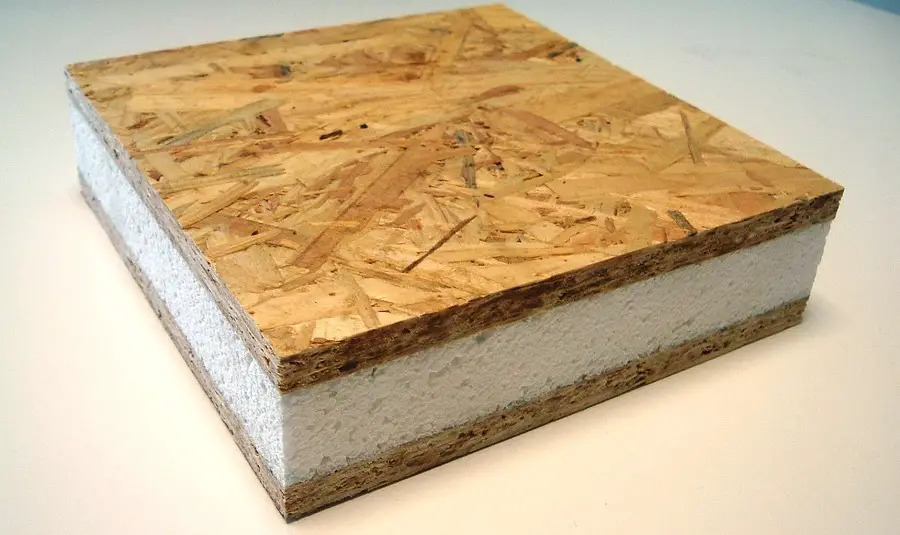
A bit of history
The term SIP was introduced in 1935 by the Forest Products Laboratory Madison, USA for panels consisting of a wooden frame with plywood and cardboard on either side and insulation on the inside. These panels were used to build houses that were dismantled after 30 years and analyzed for strength and warping over time.
Their appearance was necessary because, with an increased demand for housing and the need for sawn timber, less wood was used to build a house. In addition, the system allowed for quick and economical construction, thus lowering the price of houses.
In 1952 Alden B. Dow made the first SIP panel using foam insulation. The panel went into mass production in the 60s. Such prefabricated panels were used extensively in the USA for house construction before reaching Europe, where the method was later adopted.
Advantages of SIP panels
Panels are presented by many manufacturers and builders as the building material of the 21st century. They believe that the use of SIP panels for building houses or industrial structures comes with advantages for architects, designers and builders as well as for the beneficiaries.
Let's start by looking at some of the qualities of the panels:
- can be used to build interior and exterior walls, floors and roofs
- these walls are stronger than those built on wooden structures
- resulting in buildings that are 50% and 50% more energy efficient than traditional buildings
- lower values of heat transfer coefficient at lower wall thicknesses
- can be easily combined with other building materials: bricks, stone, cement, wood, steel, glass
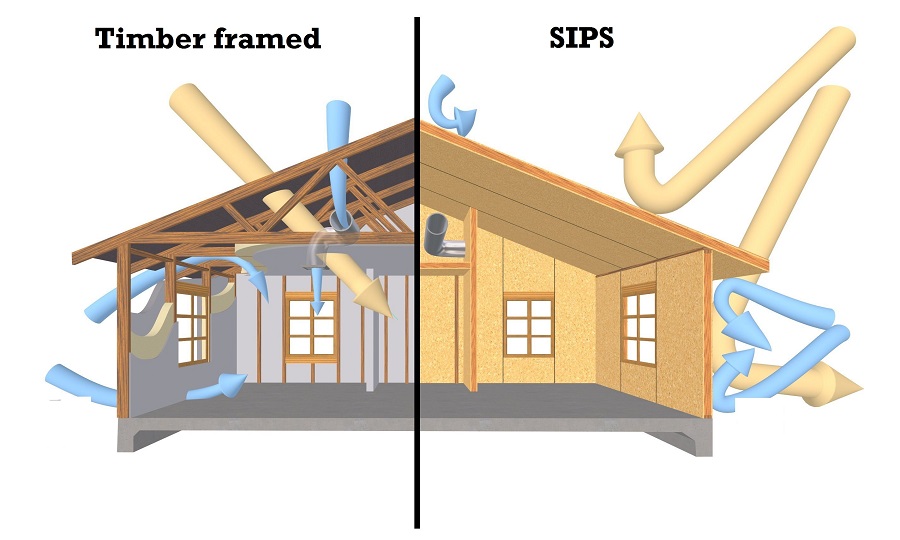
Builders choose to work with SIP panels because:
- shorten construction time by 2-3 times
- no need for advanced supervision and control during assembly
- no special tools or equipment needed
- construction costs can be more easily estimated
But the most satisfied seem to be the beneficiaries, because SIP panels allow lightweight houses to be built quickly. Labor costs will be lower than building a traditional house, and energy-efficient and soundproof homes will result.
Manufacturers tell us that energy bills are likely to be up to 50-60% lower compared to a similar home made from traditional building materials. In addition, the resilient and resilient construction is said to be more resistant to earthquakes.
The fact that the roof can be built using SIP panels eliminates the need to use beams to reinforce the roof. The space will be more airy allowing attic space. The construction system is also recommended for building attic dwellings.
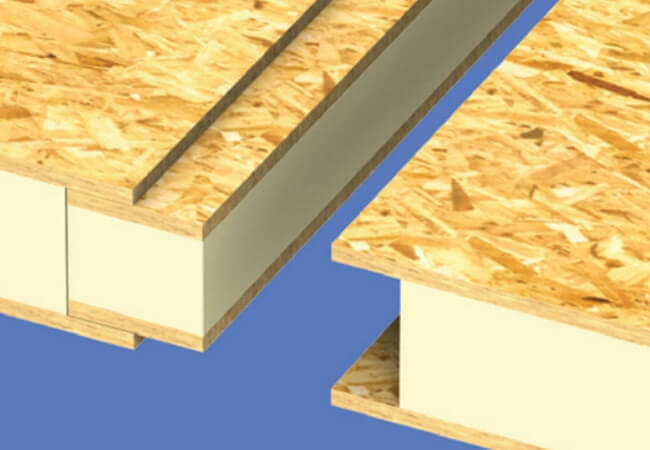
Disadvantages
There are also disadvantages to consider:
- buildings constructed with SIP panels cannot be taller than 12.5 m
- expanded and extruded polystyrene are produced with HBCD (hexabromcyclocyclododecane), 0 substance considered as dangerous by the European Union (REACH program) being classified PBT (persistent, bioaccumulative and toxic)
- OSB can have formaldehyde emissions. However, there are also versions of OSB with low formaldehyde emissions or even in emission class 0
- if OSB boards are not treated there is a danger of mold and dampness
- the walls should be joined at a 90º angle so as not to increase losses and reduce performance
It is true that many of the disadvantages are highlighted by manufacturers of other building systems. As a product used successfully all over the world, manufacturers have had to adapt and use the cleanest possible materials in their production in order to get the necessary approvals for use in construction. So it is possible to find SIP panels without formaldehyde emissions and containing a non-hazardous insulating foam.
SIP in Romania
The construction system is used and even produced in Romania. A SIP panel factory exists in Clinceni, in Ilfov. The manufacturer offers a range of prefabricated panels in thicknesses from 120 to 240 mm, widths from 122 mm to 1250 mm and maximum lengths of 2800 mm, and claims the material has a heat transfer coefficient of 0.022 W/mK.
In addition to panels made here, there are also panels imported from the US, UK or China.
No matter where they come from it is clear that SIP panels are a building material for wooden houses that cannot be ignored and as a result added to other existing systems. Despite the perception that OSB cannot be considered wood, it is still wood and has the advantage of using fast-growing, smaller and less valuable species.
If the information about prefabricated panels could be useful to others, please feel free to share this article. If you have any additions, questions or would like more information, please leave them below in the comments.
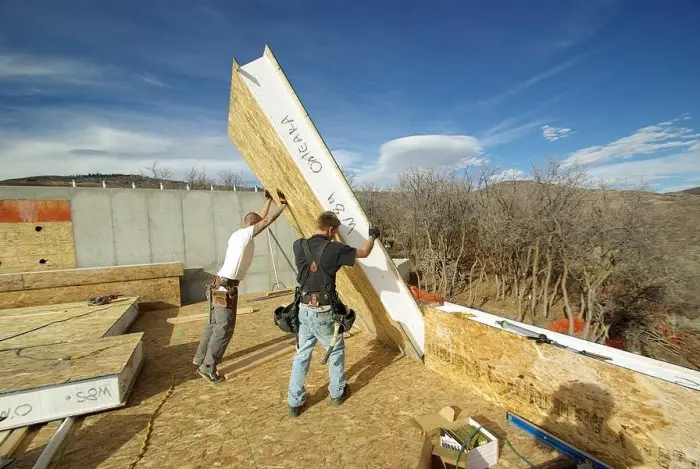






















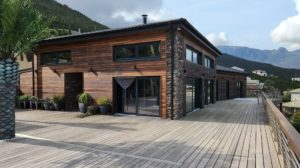
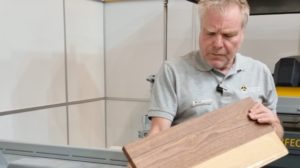
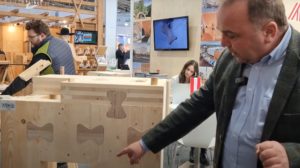
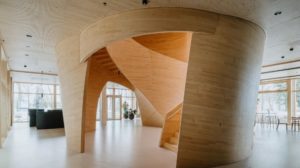

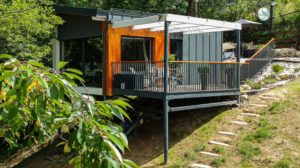





Very good article (glad you considered my comment). I live in a house built of SIP panels of 60m2 useful heated ground floor (and 40m2 attic) having consumption at -15gr of 12kwh/24 hours. That means an average winter month with heating on electricity is about 120 lei. Temperature in the house of 23gr. Heating is done by a mini-split air conditioner of 12000btu.
Hello!
Thanks for the idea. 🙂 And thanks for the additional information. They are very useful.
All the best!
Can you tell us how much a panel costs? Evt. Price/m2? Thanks
Think of it like this: 2 sheets of 12mm osb, a 20cm thick expanded polystyrene sheet glued in the press with a polyurethane solution (foam with a low expansion coefficient). The result is a 3m2 panel. Plus labour + profit
Simple arithmetic class III. 12×30=360 kwh x 0,65 = ???
Lica dear, read carefully. I wrote 12kwh at -15 degrees. I don't know where you live, but we don't have 30 days with this constant temperature. I gave the cost for an average winter month. This is also the way to dimension everything related to heating/cooling (insulation, heating tool, etc.), i.e. according to the average annual temperature of the area you are in. In my house, for example, for winter it's -4gr.
Okay, Zoli. I can accept your reasoning. If you can make me a good offer, SIP consisting of 1 sheet osb3 12mm +polystyrene graphite, anti-leakage, 220mm +1sheet MgO 12mm, required 1 pc house 100mp
+ attic, leave a contact and we'll talk.
Who was your SIP panel supplier? I'm interested if they also installed them, i.e. they built your house and how much it cost. I really think it's a very good alternative to the traditional house.
Hello. I too am interested in building such a house - I am currently researching, reading everything I can find about these panels. Some things are clear......other part..not so much 🙂 For example about the foundation of such a construction. Those who build these houses say that one of the advantages is that there is no need for a deep foundation, that a shallow one is enough because the construction is not heavy. Ok... sounds logical. But another argument found said that.....because the construction is light, if a shallow foundation is used, which does not go down into the ground below the freezing point of the ground, the construction will be subject to movements caused by the freezing and therefore expansion of the ground in winter....and then the thawing of the ground in spring....and that these movements can cause cracks to appear in the finishes at the joints of the boards, both inside and outside. Hmmm....and that sounds logical :).
And then...
Hello everyone and especially Adrian and Alexia,
I produce structural and thermal insulated panels (SIP) and build houses from them from A to Z in Bihor county, or deliver pre-fabricated structure completely wrapped on modules in other counties.
We have multiple construction sites in progress and open to visitors in different stages of finishing, so you can see all the processes that are related to this kind of Houses, we do them on the foundation Continue with... or without slab, on pillars, on micropiles, on concrete slabs, trailer or on bricks 🙂
Besides that we build all in modular system and completely prefabricated from CLT + Basaltic Concrete.
You can contact me in writing on: "i@zeb.ro" and then by phone, in Oradea people know me as DoDo
Even if we don't build for you, we can help you with any technical or financial advice if you want to start on your own or with too many disorganized craftsmen to make the best decisions in time! We and the team and I are very enthusiastic about these "new" (to us) lightweight building systems and the energy results at the end of each winter, so kindly and by phone or in writing ask anything, I will answer concisely; Straightforward.
hello. i want to buy SIP panels to build my own house. footprint of the house 75m with attic. please give me a contact where i can talk to you. with esteem Cristi Ionescu
good day
I would like to ask you if I can afford to build my house from structural panels (SIP),
can you make me the panels for the house on the basis of a project (made by the architect) and on the basis of the same project assemble it for me? I would also like to ask you how long before I have to contact you to schedule the erection of the house (of course after I have the geo study, the project, the permits and the foundation ready)? One more question : according to your experience, what is the cost of a SIP house per m2 (without project, study and foundation costs), at least approximately.
Waiting for your answer
Hello! A phone number can ... for some opinions... thanks . Bogdan
hello. i found your post on a website ...wooden houses. i want to build a house from SIP panels. i would ask you if you are willing to give me a contact to share some advice from your experience. with respect Cristi Ionescu
Hi Zoli,
Can you please tell me in summer what your energy consumption is if you use AC.
Thanks in advance.
Hi Zoli, what was the price of the red house and with what company did you build the house (or where did you buy the panels and at what price per piece)? Thanks in advance.
A phone number?
OSB treatment, interior wall cladding and I think there are a few more...at that price you get CLT and you know a job.
Does the electrical installation come directly mounted inside in foam?
A manufacturing company? Recommendations?
Hi, I've been researching about building a house with sip panels, I read your article and got in touch with the factory you refer to and found out how much it costs. The prices are as follows:
Material 150-180 euro/sqm
Red (assembly included) - 250 - 300 euro/sqm
Turnkey - 550 - 650 euro/sqm
Prices do not include VAT and transport of materials.
Much? Little? This was the cheapest price I found on the Romanian SIP panel market.
Personally I don't want to spend 40 000 for 150m2 in red for a "temporary" house on one level ....
I hope my comment is helpful, all the best!
Hi Dan.
Very good information. Is the factory you got the offer from the one in Clinceni, Ilfov?
Do they also provide the assembly of the panels and the whole structure?
And yes, it seems like a lot 300 euro/sqm just for the structure of the house. Is the cost of the foundation and installations included?
Thanks a lot!
Hi, yes the factory in Clinceni, the price of 300 is only for the structure and assembly! it does not include foundation, windows or roof (sheet metal), installations are not even mentioned :)) I looked for information about CLT and I can say that it is 350-400euro for the structure, insulated with insulation and polystyrene. The factory is in Bacau.
I for one decided to go with 20 gauge poroth. brick, basalt and plasterboard inside/ceiling and polystyrene outside/foundation. The house will be on one level. From my calculations it shouldn't cost nearly as much as sip/clt panels. I will install a ventilation system, quality window joinery, underfloor heating and I think I will get an efficient house. All the best!
Hi, I saw your post here and I'm curious if you managed to make the house as you said.
What was the total cost of the house in red and please tell us how much it cost in grey.
are very useful information for people who want to start building a house.
Thanks!
Hello. I'm interested in where you got the SIP panels
Hello, please give me a price offer for the jeans you produce and sell.